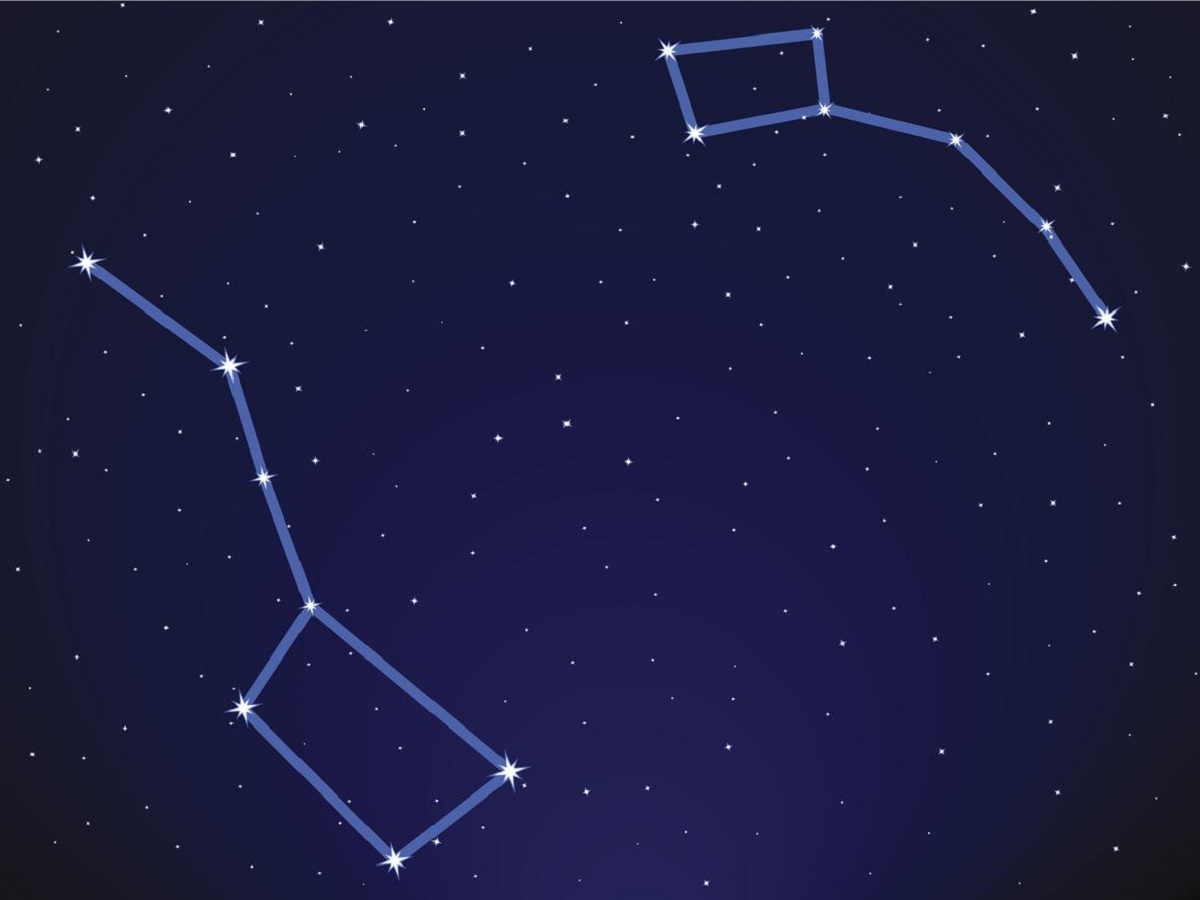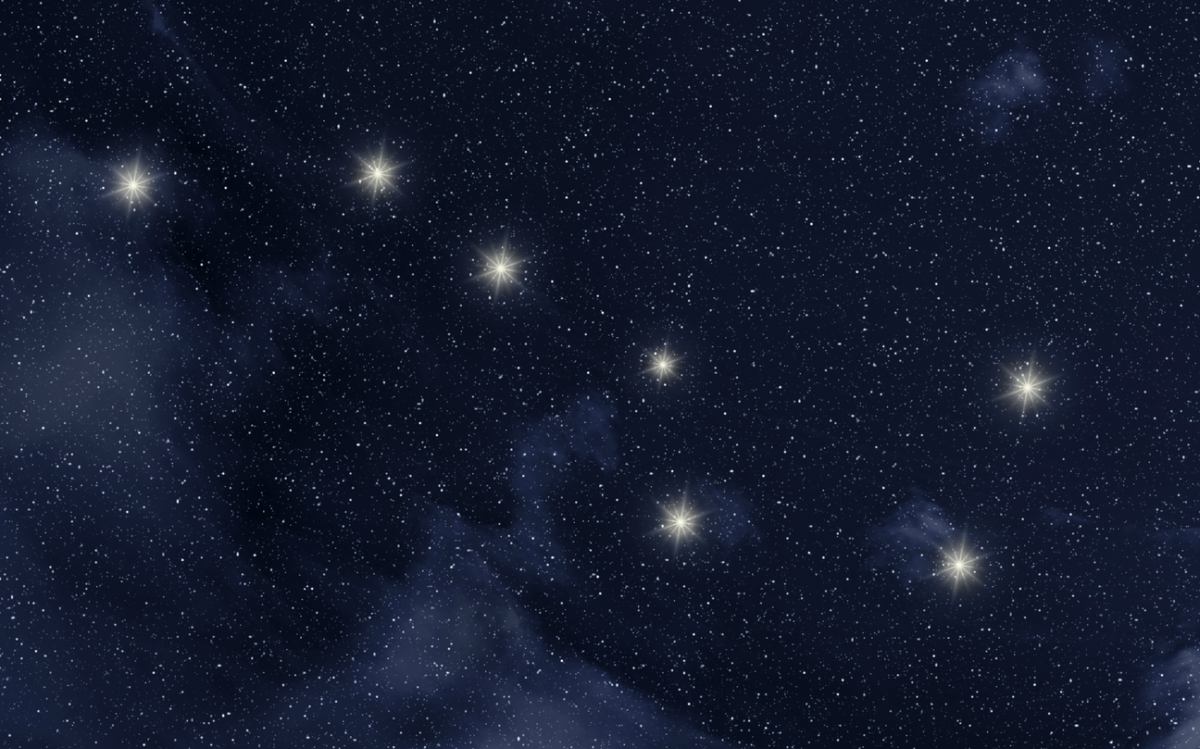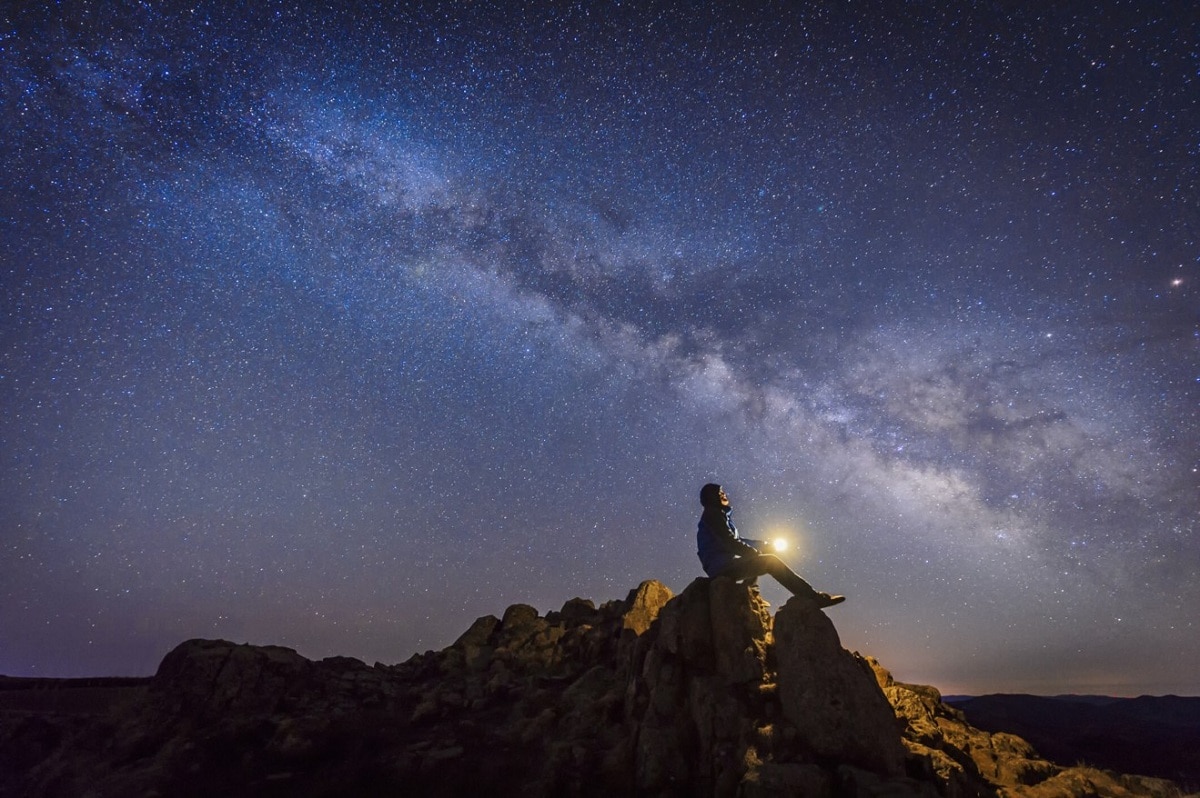
One of the most important constellations for astronomers is the Little Bear. It is located in the northern hemisphere and can be seen from Europe throughout the year. This constellation has numerous stars, its main being Polaris. It is one of the most important for astronomers since many other celestial bodies use this star as if it were an axis to be able to rotate. Furthermore, in the legend of the Vedas Indians, Polaris plays a very important role as the leader of the group of gods.
In this article we are going to tell you all the characteristics, operation and meaning of the Ursa Minor star constellation.
Key features

The shape of the Ursa Minor is similar to that of the Great Bear, but in contrast, its axis is not straight, but twisted backwards. The main star of this constellation, Polaris, maintains a fixed position in the night sky. The height of the star's position in the north corresponds to the latitude of the observer. The constellation is made up of seven stars shaped like a car, four of them form the deep part of the car and the other three are the handles of the car.
The most famous element of Ursa Minor is the North Star, which is located on the extension of the Earth's axis, so it remains fixed in the sky and points to the geographic north pole. Navigators use it as the North Star. Reference point during the trip. Except for the North Star, Ursa Minor lacks elements of interest to amateur astronomy. Given its location, Ursa Minor can only be seen in the northern hemisphere, but in return, in that hemisphere it is seen all year round. Together with its companion the Big Dipper, it is one of the most characteristic elements of the northern hemisphere sky.
Ursa Minor mythology
In Greek mythology, there are many theories about the origin of Ursa Minor. One of hers is Fénice, who was converted into bear by Artemis after being attracted to Zeus. This story is very similar to Callisto's. It was incorporated into Ursa Major, so some authors believe that there must be a disaster in the first story with two identical characters (Zeus would have turned Callisto into Ursa Major and later Artemis would have turned it into Ursa Minor).
Callisto is a very beautiful fairy who fell in love with Zeus. Together they have their son Arcas. Zeus's wife, Hera, turned Callisto into a bear out of jealousy. Many years later, Callisto met her son, who did not recognize her in animal form and wanted to kill her. To save her Zeus turned his son into a bear and placed them all in the sky, resulting in Ursa Major and Ursa Minor.
Main stars of Ursa Minor
Let's summarize which are the main stars of Ursa Minor:
- Î ± Ursae Minoris (Polaris, Polar Star or North Star), the brightest star in the constellation, a yellow supergiant and Cepheid variable of magnitude 1,97.
- β Ursae Minoris (Kochab), of magnitude 2,07, an orange giant star that was formerly used as a pole star.
- γ Ursae Minoris (Pherkad), of magnitude 3,00, white and variable star of the Delta Scuti type.
- δ Ursae Minoris (Yildun or Pherkard), white star of magnitude 4,35.
- ε Ursae Minoris, eclipsing binary and variable RS Canum Venaticorum of magnitude 4,21.
- Î Ursae Minoris (Anwar al Farkadain), white-yellow dwarf of magnitude 4,95.
- Calvera, an informal name for what is thought to be the closest neutron star to Earth.
Importance of the Pole Star
As we mentioned earlier, Polaris is located in the constellation Ursa Minor. This is a constellation that can be clearly seen in our sky throughout the year. We can only see those who live in the northern hemisphere. The constellation is made up of 7 stars, including the Pole Star. It can be easily identified as a yellow giant star, which is characterized by being very bright and exceeding the size of the sun. Although this may not seem correct, it is a star bigger than the sun. However, it is further away than it seems, so we cannot see it the same size or allow it to illuminate us in the way that the sun does.
Before the invention of radar and GPS and geographic positioning systems, the Pole Star was used as a navigation guide. This may be because it helps to orient yourself at the geographic celestial pole.
How to Identify Pole Star
It is a star that is fixed and although the rest of the stars seem to move in the sky, they are not. It is easy to identify because it is completely static. It is close to the Big Dipper. The two constellations are similar because they are made up of 7 stars and are shaped like a car.
It is different from other stars because it is a star that remains stationary in the sky. You can see the rest of the stars spinning around the Earth's axis of rotation. The journey of the stars lasts 24 hours, like the planets and the sun, so if we want to know the position of the pole star at a certain time, we must observe the Big Dipper. This is done because it is a relatively easy constellation to see and, close to it, is the Pole Star.
If we want to see it, we just have to draw an imaginary line that takes as a reference point two of the stars in the constellation Ursa Major called Merak and Dhube. These two stars are quite easy to identify in the sky. Once they are spotted, we have to draw another imaginary line at a distance of 5 times that between these two to find the Pole Star.
Throughout history, this star has been used as a reference point for thousands of sailors who made crossings along the sea. Keep in mind that only those who sailed through the Northern Hemisphere could see it. Thanks to this star, who has served as a guide for so many people, they could reach the positions of the cities well.
I hope that with this information you can learn more about the constellation Ursa Minor.

